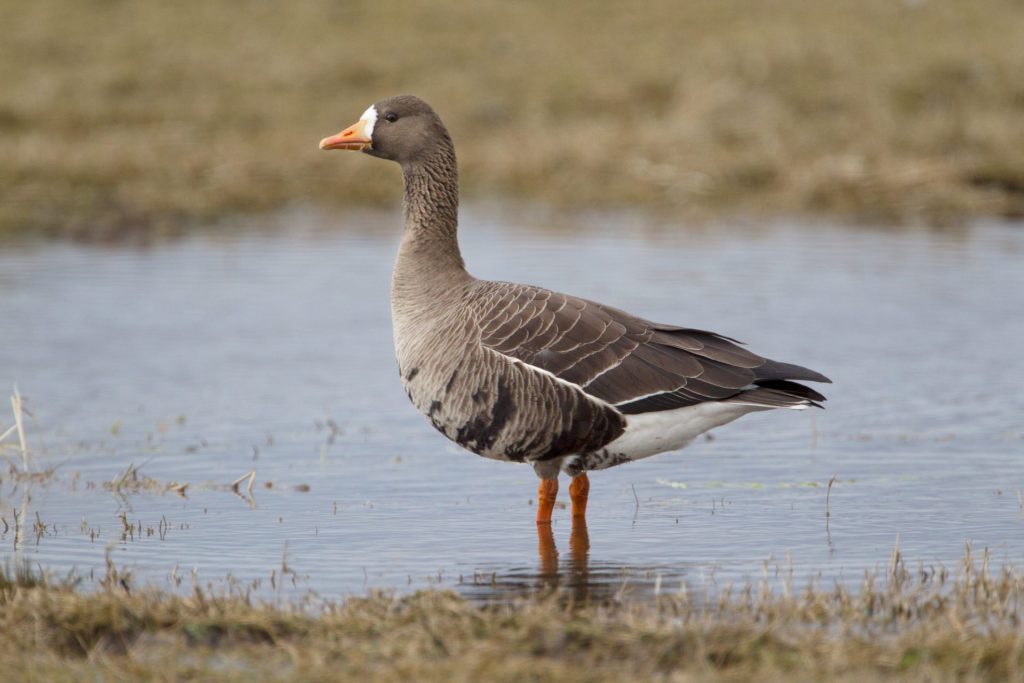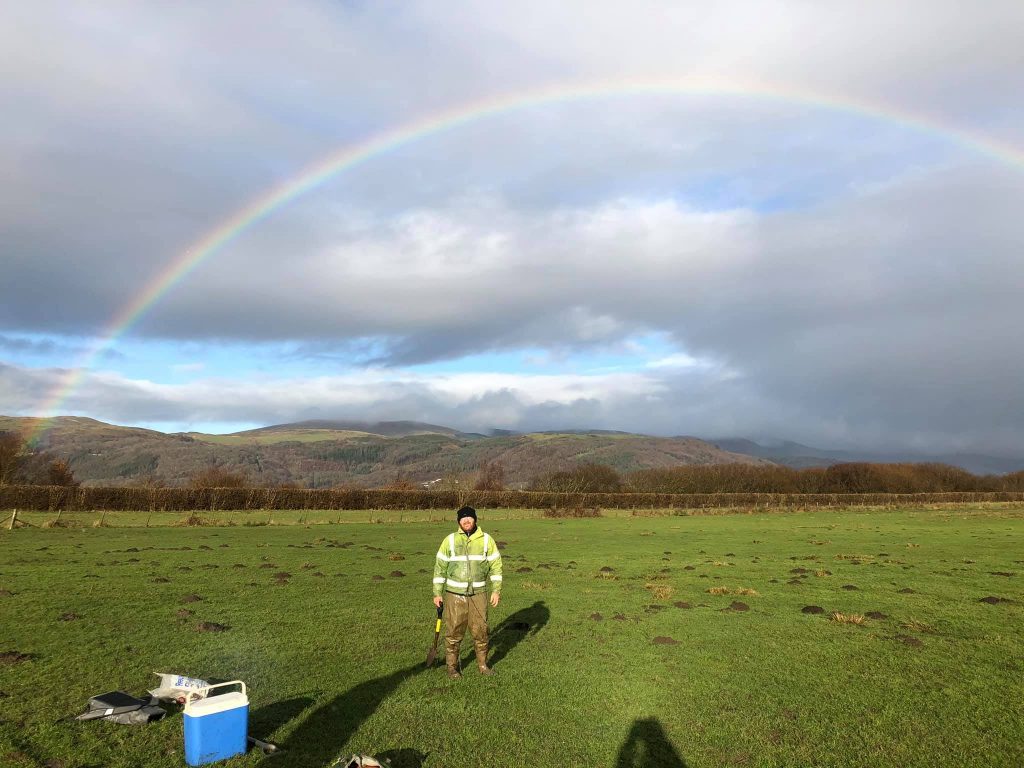Rhodri Kemp
Research Technician, Aberystwyth University
One of the key aspects of the ECHOES project is determining which plant species the Greenland White-fronted Geese (GWfG) consume at various overwintering sites. This work is duplicated at Irish and Welsh study sites as part of the INTERREG Ireland Wales Programme.
The nutritional value of the food plants will be analysed, and this has a direct bearing on the condition of the geese when they head off on their northward migration during the spring.

Examining literature relating to this goose species allowed us to compile a list of plant species they have been observed to feed upon at various sites in the past. This provided an excellent starting point in terms of indicating what plant species we should sample and also what particular parts of those plants are consumed by GWfG.
DNA meta-barcoding of GWfG faecal matter will soon enable us to determine what species of plants they are feeding on. However, in this first sampling season, in the absence of such information, it was decided that we should visit known feeding areas and collect samples of plants that are likely to be consumed based on the historical food plant species list. These samples have been collected at three different periods throughout winter so we could see if there was any change in the nutritional value of those plants.
The first sampling sessions around the Dyfi Estuary were meant to take place shortly after the GWfG flock arrived in the early autumn. Due to the Covid-19 pandemic, this had to be delayed until December.
The second collection took place in the middle of the winter and the third collection will be carried out just after the GWfG have departed on their northward migration. For all visits, we collected material without any risk of disturbing the geese.

To date the first two sampling periods have been successfully completed, in Wales by a team composed of Peter Dennis (Project Leader), Danny Thorogood (Botanist), and myself (Research Technician) with guidance from Gareth Thomas (Project Ornithologist).
In Ireland, Gemma Beatty (Molecular Biologist) has co-ordinated duplication of this fieldwork at the North Slobs Bird Reserve, Wexford and Dominic Berridge (Reserve Warden; National Parks and Wildlife Service, Ireland) has collected faecal material and vegetation samples from what is the primary wintering site for GWfG.
In Wales, Peter combined vegetation sampling with the collection of goose faecal material from current daytime grazing areas, whilst Danny and I collected samples from locations with suitable vegetation that were not currently grazed by GWfG.
Gareth’s input was critical as he spends much of his time monitoring the GWfG flock with great precision, resulting in highly detailed information on daily movements and seasonal feeding site preferences. Also to warn the fieldwork team to withdraw should the geese take flight and head towards their location.
So far, over 106 vegetation samples have been collected from across all the case study sites of Wales and Ireland for later analysis and comparison.

The samples are currently being cleaned, sorted, and dried ready for the next stage of the process – nutritional analysis and we anticipate discovery of fresh insights into the dietary requirements of the rare Greenland White-fronted Goose.

